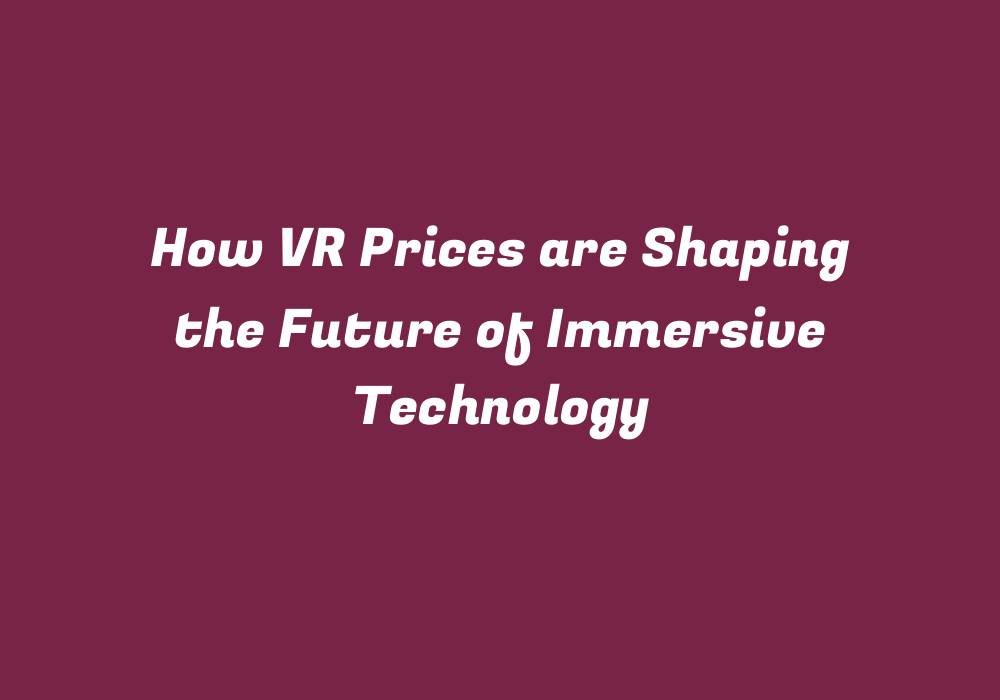How VR Prices are Shaping the Future of Immersive Technology
In recent years, virtual reality (VR) has taken the world by storm, making significant strides in terms of development and accessibility. The prices of various VR devices and software have evolved in tandem with the growing demand for immersive experiences, ultimately shaping the future of technology as we know it.
The Evolution of Pricing
Initially, the high cost of creating VR equipment and applications deterred many from exploring this realm. However, with technological advancements, prices have decreased significantly. The first-generation headsets like Oculus Rift and HTC Vive were initially quite expensive, around $599 for a full setup. Today, there are more affordable options such as Google Cardboard, starting at just $10-$20, making it more accessible to the masses.
Prices have continued to drop as developers create more cost-effective and efficient solutions. For example, Oculus Quest 2, released in late 2020, retails for around $399 with no need for a gaming PC or any additional accessories. This decrease in price has made VR much more attractive to potential consumers and has led to increased adoption across various industries.
Immersive Experiences for Everyone
The growth of the VR market is evident in its widespread applications. From entertainment and gaming to education, healthcare, and industrial training, VR is finding its way into numerous sectors. This has resulted in a broader user base requiring more accessible technology and software at reasonable prices.
In the gaming industry, prices of headsets and compatible consoles have become more competitive, enabling more gamers to enjoy VR experiences. Similarly, companies like Samsung, Lenovo, and HP have created affordable VR headsets that can be used with smartphones, lowering the barrier to entry for many users.
Education: A New Frontier
The education sector has also seen the benefits of using immersive technology. Schools and universities are incorporating VR into their curricula to provide more engaging and interactive learning experiences. In some cases, educational institutions have opted for lower-cost headsets or even mobile apps that can be used on tablets and smartphones, making these tools more accessible to a diverse range of students.
Healthcare: Revolutionizing Treatment and Training
VR technology has also made strides in the healthcare industry. It is being utilized for therapeutic purposes, such as treating anxiety disorders and phobias, and for pain management. In addition, VR training simulations are helping medical professionals refine their skills and practice procedures safely before treating patients.
VR Prices in the Industrial Sector
Industrial applications of VR have seen significant growth as well, with companies using this technology for remote inspections, maintenance tasks, and employee training. While these solutions can be costly to develop, many businesses are opting for more affordable options that cater to specific needs rather than investing in expensive full-scale solutions.
The Future of VR Pricing
As the demand for immersive technology continues to rise and innovation leads to even lower prices, it is likely that the market will become increasingly competitive. Manufacturers and developers will face the challenge of balancing affordability with the quality and performance required by users seeking more realistic and engaging experiences.
Conclusion
The evolution of VR pricing has played a crucial role in shaping the future of immersive technology. With reduced prices, more individuals can access these innovative devices and experiences across various industries. As we move forward, it is evident that affordability will remain an essential factor for continued growth and adoption of this exciting technology.
